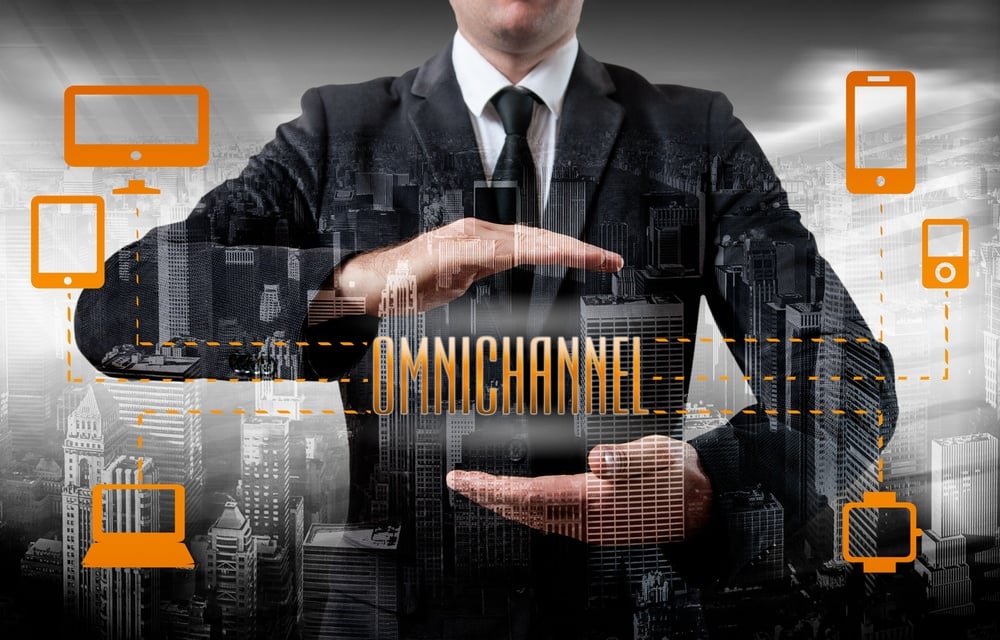Branchless Banking - Is it possible?
In a recent logicpath blog post - Top 3 Questions to Ask Before Creating a Branch Transformation Strategy – my colleague, Meghan Quinlin, spoke of smart kiosks, online banking, and phone banking replacing some existing branches at banks and credit unions if the demographics made sense. The keyword in that statement is ‘some’, because surveys continue to show customers – young and old – still want branches as part of their banking channel mix. But, beyond customer survey results, why is a move to total branchless banking in the U.S. unlikely to happen anytime soon?
In tracking U.S. and international developments on this front, the trend towards branchless banking continues to increase, especially with younger generations embracing everything digital. Moreover, in developing countries, the combination of poor infrastructure (unreliable roads, power and telecom) and a sharp increase in mobile smartphone subscribers provides the ideal environment for branchless banking. It provides a quick and cost-effective way to bring financial services to under-served populations, completely skipping traditional branch-based banking. But the dynamics in the U.S. are altogether different and favor a blended multi-channel approach to banking.
Are Banks Going Branchless? Why?
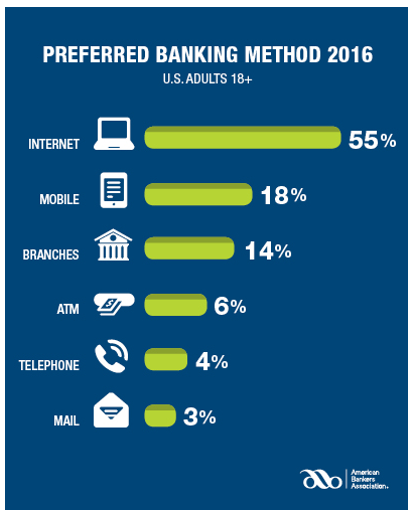 Traditional banking has long been a mainstay of the U.S. economy, with an average of 31 branches for every 100,000 adult Americans. But only two of every 15 bank interactions involve a branch, and the World Bank predicts a 33% drop in total U.S. branches by 2025 based on shifting consumer behavior. Moreover, a survey by management consulting firm Accenture shows that reliable online service was the #1 reason for bank and credit union loyalty, with only 28% saying they needed a physical branch location. And in a 2016 survey by the American Banking Association, 55% of all Americans said the Internet was their preferred banking method, 18% picked mobile, 14% picked branches and 6% picked ATMs.
Traditional banking has long been a mainstay of the U.S. economy, with an average of 31 branches for every 100,000 adult Americans. But only two of every 15 bank interactions involve a branch, and the World Bank predicts a 33% drop in total U.S. branches by 2025 based on shifting consumer behavior. Moreover, a survey by management consulting firm Accenture shows that reliable online service was the #1 reason for bank and credit union loyalty, with only 28% saying they needed a physical branch location. And in a 2016 survey by the American Banking Association, 55% of all Americans said the Internet was their preferred banking method, 18% picked mobile, 14% picked branches and 6% picked ATMs.
In parallel, economic factors are driving banks and credit unions away from branches as financial technology companies (FinTechs) offer banking transactions for a fraction of the cost – putting banks and credit unions under pressure to reduce branch expenses, transaction costs and overhead to remain competitive.
In addition, financial institutions see branchless banking as a way to grow beyond local regions and serve customers across broader geographies, unconstrained by the lack of a physical branch presence. Together, these factors are driving banks and credit unions towards branchless banking.
What’s Driving Customers Away From Branches?
There are four main factors that are driving customers away from branches into other banking channels such as online, mobile and smart ATM.
| Technology |
As consumers get more comfortable with the advantages and efficiencies of ‘anytime, anywhere’ banking over the Internet, smartphones and ATMs, branches are losing a lot of their foot-traffic. Consumers want, and like, the convenience of sitting at home and securely doing their banking transactions – depositing checks, paying bills, sending cash to a friend, etc. So financial institutions must provide a secure, user-friendly and seamless technology-based banking experience. Banks and credit unions that do not step-up on the technology front will not survive in the years ahead. |
|
Freemium Mindset
|
Today’s younger consumers are attuned to not paying for basic services, such as Facebook, Whatsapp and the multitude of free apps they use every day. And this mindset extends to them not wanting to pay too much for basic banking transactions. So banks and credit unions are under pressure to trim fees and expenses to profitably serve Gen-Xers and millennials and keep them from defecting to FinTechs. |
|
Disenchantment with Banks
|
There’s also widespread disenchantment with traditional financial institutions in the aftermath of the financial crisis of 2007, especially among younger Americans who no longer buy into banking with the ‘establishment’. So when FinTechs step-in with new and exciting brands, younger consumers are very willing to try ‘em out. |
|
Changing Demographics
|
Demographics, too, play a role in the move to branchless banking. By 2020, millennials will make up about 75% of America’s workforce. Millennials, and the generations that follow, use a combination of the Internet, smartphones and apps to satisfy most of their needs – they actively engage in ecommerce, are active on social media sites, seek out and trust peer reviews and are quick to adopt efficient and disruptive business models such as AirBnB, Amazon and Uber. Close to 90% of surveyed millennials do most of their banking online and about 50% of them use smartphones for financial transactions. |
As a result, 85% of all U.S. banking transactions now take place outside the branch, and that number is expected to rise in the years to come.
So… Is a 100% branchless bank the future of banking?
Not quite. During a recent webinar with our partner Level5, we discussed that the branch is not dead – and still is an important part of the banking channel mix.
Most non-branch transactions are for routine activities such as check deposits, bill payment, ATM cash withdrawals, money transfers, etc. For other transactions – such as opening an account, resolving account issues, loans, large financial transactions, financial planning or wealth management - consumers, including millennials, continue to want the deeper level of human interaction and contact that only branches can deliver.
So it’s not about switching channels but about simultaneously using multiple channels based on what each is best suited for (such as ATMs for quick cash and online/mobile to pay bills or make transfers) – as the graph below also shows, with 65% of surveyed customers saying they use multiple channels for their banking needs.
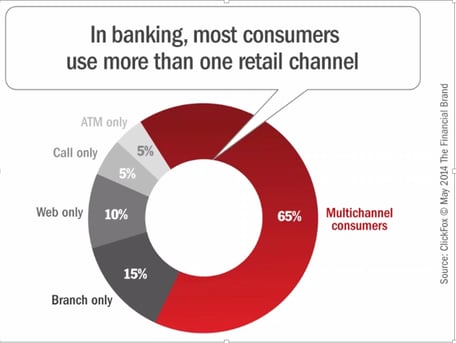
Source: Omni-Channel Banking – Is the Branch Dead? Or is it the Future? [Webinar]
Another recent survey showed that 57% of all consumers want in-person interactions at bank branches even though they use a combination of online, mobile, ATM and phone banking for a lot of their transactional needs – indicating that banks cannot go branchless but must have branches to serve more than half their customers. And it’s not just the older guys who like walking into branches… 52% of surveyed millennials say they’ve visited a branch in person over the past month. Therefore, consumers, young and old, clearly aren’t willing to go completely branchless and, indeed, need the option of being able to walk into a branch.
In addition, younger generations are more socially conscious, like to support local businesses over giant faceless corporations, and often choose a community bank or credit union that invests in the community, supports local businesses and contributes positively to local initiatives. So having a local, do-good physical branch could turn millennials into advocates for the bank or credit union.
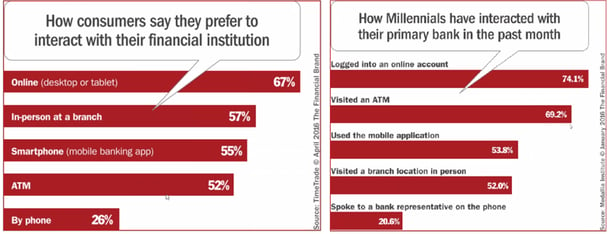
Source: Omni-Channel Banking – Is the Branch Dead? Or is it the Future? [Webinar]
Branches Drive Customer Satisfaction and Referrals
Customer satisfaction surveys also support branch-based banking and suggest that branch visits are more likely to result in referrals too. The J.D. Power 2017 U.S. Retail Banking Satisfaction Study found that “overall retail bank satisfaction is significantly higher among customers who visited a branch within the past 12 months vs. those who only used digital channels. Within millennials, satisfaction was highest when customers used both branch and digital banking channels.” Branch visits are also more likely to result in referrals.
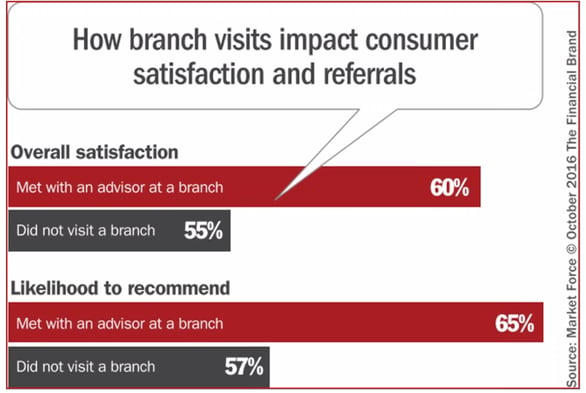
Source: Omni-Channel Banking – Is the Branch Dead? Or is it the Future? [Webinar]
Bank and credit union customers want the best of both worlds – technology and human contact – stitched together for a consistent multichannel experience. Therefore, banks and credit unions need to provide seamless multi-channel banking by trimming-down branch size, reducing branch staff, deploying universal bankers and pushing technology into the branch – in a manner that reduces overall costs and makes banks economically more competitive. Banks must also leverage branches as drivers of customer satisfaction and referrals, and transition branch staff away from performing routine transactions and re-focus them on adding tangible value through personalized advice on non-routine financial matters.
The Verdict: Far from being obsolete, branches are vital to delivering customer satisfaction as an integral component of a multi-channel banking strategy but need to fundamentally change to reduce costs and become a seamless component of a new technology-enabled banking experience.
Sources:
https://www.washingtonpost.com/news/wonk/wp/2016/04/19/say-goodbye-to-your-neighborhood-bank-branch/?utm_term=.b8dd4bb36463
https://www.aba.com/Press/Pages/083016BankingPreference.aspx
http://www.marketwatch.com/story/its-time-to-play-the-online-banking-revolution-2015-07-01
https://thefinancialbrand.com/40208/millennial-branchless-and-alternative-banking-survey/
https://thefinancialbrand.com/63679/bank-credit-union-branch-network-strategy/
http://info.logicpath.com/request-to-download-of-level5-webinar
http://www.jdpower.com/press-releases/jd-power-2017-us-retail-banking-satisfaction-study
